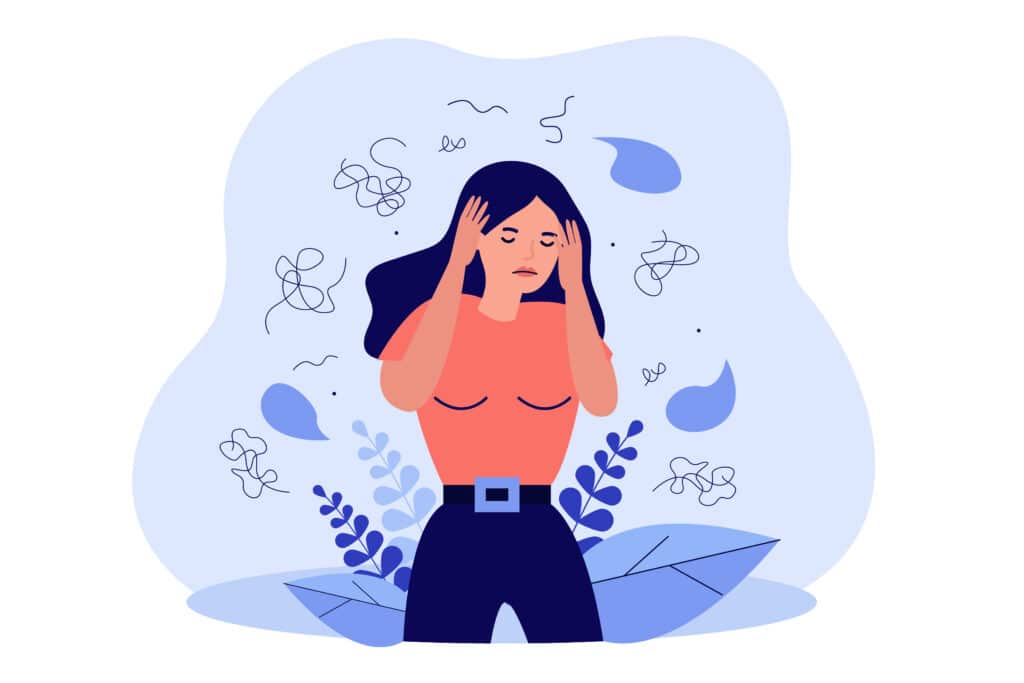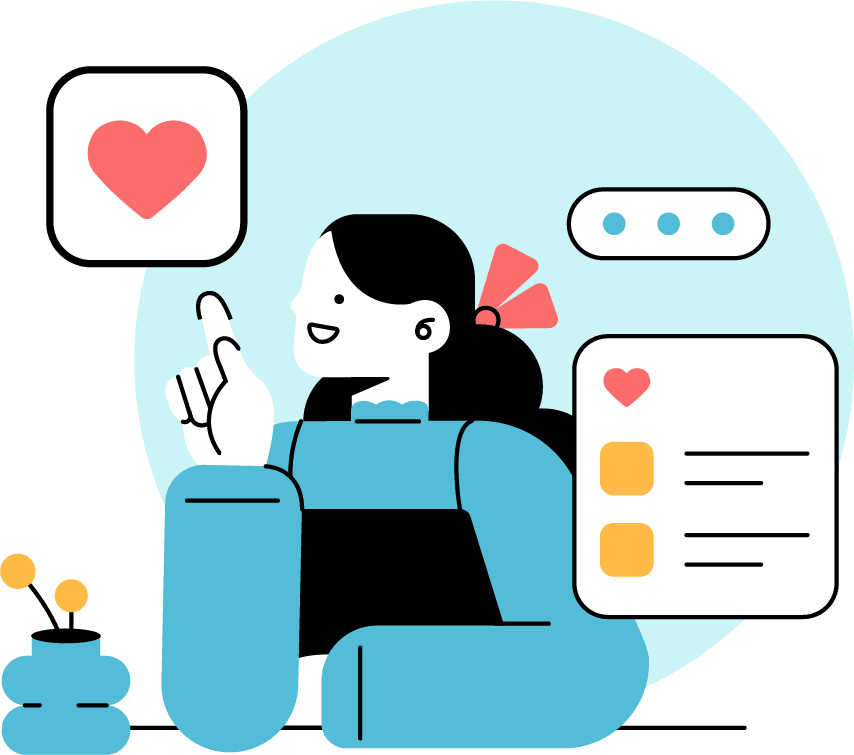Anxiety disorders affect over 280 million people all over the globe, making it the most common mental health condition in the world.
There’s a significant difference in experiencing anxiety when you are late to a meeting or sitting in traffic; those who struggle with chronic anxiety disorders don’t often feel relief after a stressful meeting or event is over. They endure anxiety in their daily life.
Treating anxiety disorders can be challenging, but fortunately, many find relief and control from counseling, therapy, relaxation techniques, lifestyle changes, and medication.
Here are a few facts about anxiety disorders that will help you better understand the condition, whether you suffer from it or someone close to you does.
1. Anxiety can cause physical symptoms
Anxiety shows itself in more than one way — it’s not just psychological, but physical as well.
This is thanks to the autonomic nervous system, which regulates heart rate and breathing (among other things), which also produces the fight or flight response in the human body.
When a person is feeling stressed or anxious, the nervous system kicks into gear and physical symptoms may appear. These include:
- Headaches
- Nausea
- Stomach pain
- Muscle tension and aches
- Shortness of breath, dry mouth
- Shakiness, trembling
2. Workplace stress can cause anxiety, and anxiety can cause stress at work
The correlation between stress and anxiety is most prevalent in work-related situations for adults who struggle with anxiety.
Stress in the workplace can be a good thing — when you’re facing adversity, learning a new skill, or experiencing personal growth, stress may be present in those environments when you’re being challenged to achieve something new.
Unhealthy stress in the workplace can be caused by a myriad of things — a new boss, fear of job loss, uncertainty about your abilities, or excessive worry about new tasks you don’t feel adept enough at managing.
As a result of a stressful workplace, anxiety symptoms are often experienced. Anxiety is a direct reaction to stress, making it essential to address it. While stress can be relieved and often goes away, anxiety persists even when stressful situations have passed.
Managing stress at work is a healthy and critical step to avoid the development of an anxiety disorder or anxiety symptoms. Speak with a manager about what you need to maintain a healthy environment and rely on social support groups to feel seen and heard.
3. Just one-third of people who suffer from anxiety receive adequate treatment
The staggering numbers show that nearly 275 million adults around the world suffer from anxiety disorders — around 4% of the global population. Anxiety is the world’s largest mental health problem, and just one-third of those who suffer from it receive adequate treatment.
Why are treatment numbers so low?
- Mental health stigmas. For decades, mental health issues have been stigmatized in negative ways and instilling fear in those who may have otherwise gotten treatment. Many people fear what may happen to them if they ask for help with their mental health conditions, or fear being embarrassed if their loved ones or community members knew about their mental health condition.
- Lack of resources. Without proper financial security or health insurance, Americans don’t opt for care because it’s not a realistic treatment plan for them. Paying out of pocket is out of the question for many families.
- Lack of information. The lack of information and general knowledge on how to find a mental health professional or a specialty doctor remains a significant obstacle for many.
4. Anxiety disorders develop from several components
You may be unsure where your anxiety disorder came from or how it was developed. The truth is, researchers don’t know for sure what causes anxiety, just that there are several components that anxiety disorders can develop from, including:
- Genetics — if the condition is in your family history, it’s possible to inherit anxiety disorders from family members
- Environmental factors — life events or experiencing major trauma can trigger anxiety disorders, particularly for those with higher risk factors
- Chemical imbalance — Those dealing with long-term stress, whether at work, at home, in relation to physical or mental health, can develop anxiety disorders
5. There are different types of anxiety disorders
Anxiety disorders are mental illnesses that cause constant worry and fear, causing those who suffer from them to make changes in their daily lives and avoid certain (or most) situations.
The major anxiety disorders are:
-
Generalized anxiety disorder (GAD)
Generalized anxiety disorder affects about 3% of the US population (6.8 million adults), with less than half of that number receiving treatment. This anxiety disorder is often associated with depression, and women are twice as likely to be affected as men.
Characterized by excessive worry and exaggerated fear that interferes with daily life, it can be crippling for those who experience anxiety.
Symptoms of generalized anxiety disorder include:
- Feeling overwhelmed, restless, on-edge
- Difficulty concentrating
- Headaches and unexplained body pains
- Easily fatigued, difficulty sleeping
- Irritable and feeling out of control
2. Panic disorder
Those with panic disorder experience sudden periods of intense fear and panic, accompanied with physical symptoms like chest pain and heart palpitations. These repeated episodes of fear and loss of control (known as panic attacks) can occur several times a day or as little as a few times a year.
People with panic disorder try to avoid attacks as much as they can; some avoid certain places, people, and events that they associate with panic attacks.
Symptoms of panic disorder include:
- Sweating, racing heart
- Chest pain, trembling
- Feelings of doom and despair
- Loss of control of emotions
3. Social anxiety disorder
Social anxiety is characterized by intense anxiety in regards to everyday situations, like going to work or school, or limited situations, like speaking in public. Those who suffer from social anxiety disorder may have crippling feelings of anxiety at the thought of being around people, preventing them from putting themselves in situations where they can be judged or watched by others.
Emotional and behavioral symptoms include:
- Fear or worry about embarrassing yourself
- Fear of interacting with strangers
- Avoiding situations where you may be judged or looked at
- Anxiety leading up to an event
Social anxiety disorder has many other related disorders in its class. These include selective mutism, where a person is unable to speak in certain situations, or separation anxiety disorder, where a person experiences excessive and recurrent stress about being away from loved ones.
4. Specific phobias
Specific phobias are a type of anxiety disorder that causes a person to experience an extreme fear and irrational reaction to a person, place, or thing. The imagined threats, or phobias, are much more significant to the individual than they are in reality, making them irrational.
When a person is faced with a phobia, they typically experience intense distress and are inconsolable. People who have phobias often lose their ability to function normally and experience a panic attack when the phobia is present.
You may have heard of Arachnophobia, fear of spiders, or claustrophobia, fear of confined spaces. These are common and specific phobias. More complex phobias are likely to develop through genetics and traumatic events.
Here are the psychological and physical symptoms of exposure to a phobia:
- Uncontrollable anxiety when presented with a phobia
- Inability to function normally when exposed to the trigger
- Acknowledgment that the fear is irrational but unable to control the fear
- Sweating, accelerated heartbeat, chills
- Chest pain, dizziness, nausea
Other disorders include post-traumatic stress disorder (PTSD), obsessive-compulsive disorder (OCD), and other social phobias.
Treat Anxiety with a Clear Path Forward
Knowing the facts about anxiety disorders can be helpful when seeking help or exploring your treatment options.
If you struggle with anxiety and need support, please don’t hesitate to reach out. At Clear Telehealth, we teach our patients how to manage stress and anxiety using a combination of therapy, relaxation techniques, and coping skills all from the comfort of your own home. We aim to help our clients and their families by providing an engaging, therapeutic treatment environment, and the latest in evidence-based clinical care. We offer a clear path to mental health treatment, please call us today to learn more about our anxiety treatment options 866.680.0969.






